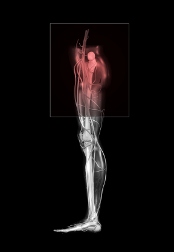 Metal-on-metal hip replacement devices were meant to be longer lasting implants that appealed to younger patients who needed hip replacement surgery. In recent years, news has emerged that the metal-on-metal hip devices are associated with early failure linked to metallosis. These implants, which were marketed as lasting for 15 to 20 years, were being replaced within five years of implant.
Metal-on-metal hip replacement devices were meant to be longer lasting implants that appealed to younger patients who needed hip replacement surgery. In recent years, news has emerged that the metal-on-metal hip devices are associated with early failure linked to metallosis. These implants, which were marketed as lasting for 15 to 20 years, were being replaced within five years of implant."Stryker came out with Rejuvenate in late 2009," Stewart says. "It was a great time to push the device because it was not metal-on-metal. The Rejuvenate was modular, so they could call it a custom fit. The device would last longer, have a better range of motion, and fit the patient better. It was an easy sell."
Unfortunately, some patients have encountered Stryker hip replacement problems and developed symptoms similar to those seen in metal-on-metal hip replacement devices. One patient came to Stewart after a doctor found pus, dirty tissue and a pseudo-tumor formation in her hip, identical to the symptoms experienced by many metal-on-metal hip replacement recipients. Stewart says the patient's case was put on the backburner because doctors saw no way that a device that did not have the metal-on-metal component could cause metallosis. It was not until several patients approached his firm that he and his colleague, Brenda Fulmer, looked more closely into the Stryker Rejuvenate situation.
READ MORE STRYKER REJUVENATE LEGAL NEWS
Stryker has issued information about the Rejuvenate metallosis concerns, but indicated the problem is with the doctors' implantation techniques or with the patient's body chemistry.
"It was fortuitous for Stryker to launch Rejuvenate so they could tout it as being an improvement over metal-on-metal devices," Stewart says. "But it seems to cause exactly the same problems. Because it's modular, there is a metal-on-metal interface, but it's the neck and stem as opposed to the ball and socket."
